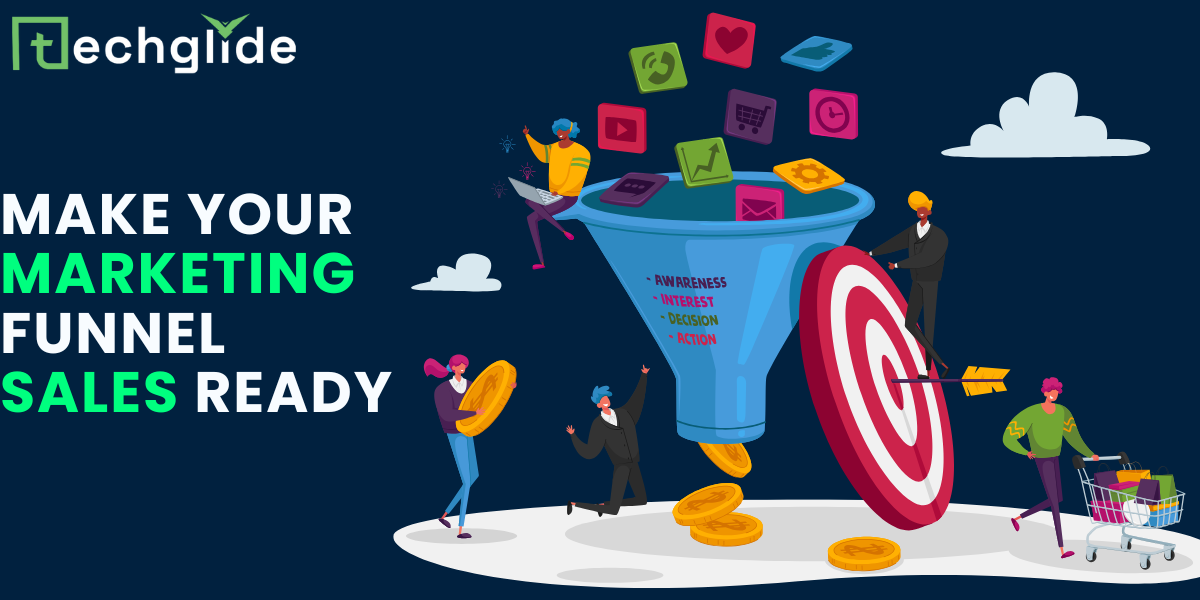In this blog, we will discuss how we can make our marketing funnels sales-ready.
A sales-ready marketing funnel is a systematic approach to lead a potential buyer from awareness to purchase. Many marketers attract a lot of interest and excitement about their products, but are not making sales. This is often due to their sales funnel not being optimized.
What it all adds up to is knowing your audience. You need to figure out how to engineer an easy road map for them to follow, where they receive the right information at the right time, building trust, adding value, and making it easy to buy from you, with as little friction as possible.
Every stage requires careful consideration, from the top of the funnel content creating interest, awareness at the top, to nurturing in the middle with personalized communications, to giving customers compelling reasons to buy, and making it as easy as possible and effective at the bottom of the funnel.
Three Stages of a Funnel
Top of the Funnel
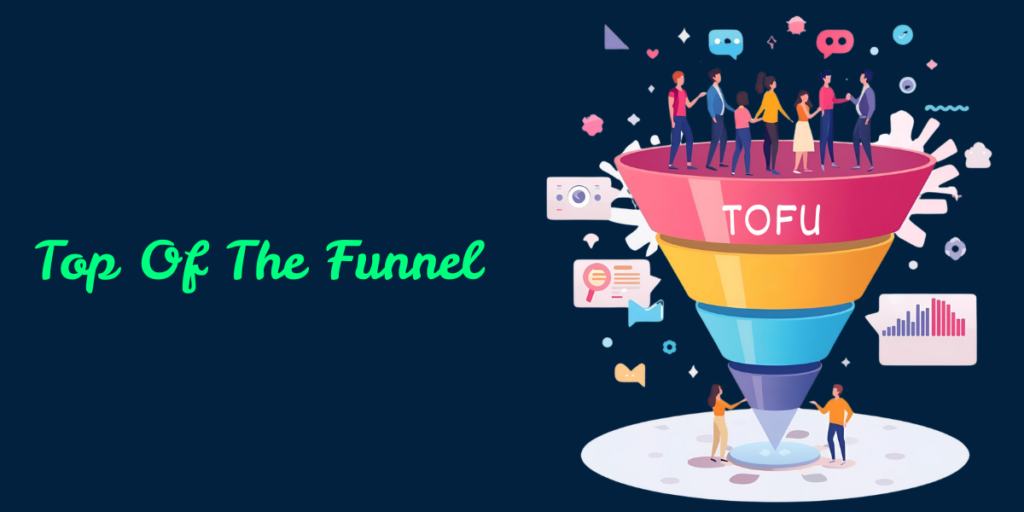
At the top of the funnel(TOFU), you are aiming to gain attraction from a broad audience who is just becoming aware of a problem or need. They are still unaware of your brand or specific solutions, making this the brand awareness stage.
Marketers will use this phase to create marketing content that educates, entertains, and informs to raise awareness. Examples will include blog articles, social media posts, and videos, making them actively engaging by mentioning general topics and common problems.
Middle of the Funnel
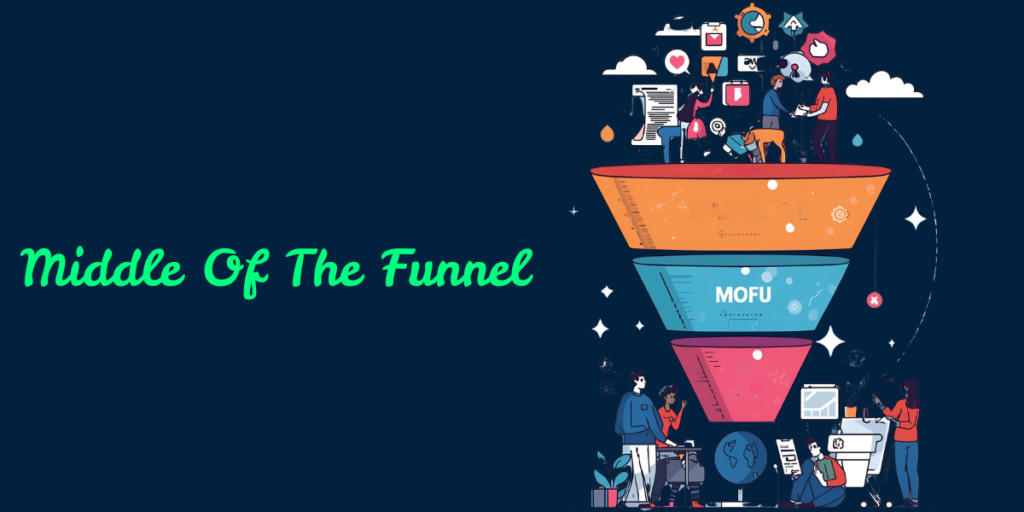
At this point, once prospects know who you are, they are now in the middle of the funnel(MOFU). They are now in the active consideration and research phase and weighing their options, including your competitors.
The objective at this stage is to build trust and credibility and illustrate why you and you alone have the best solution for them, considering their uniquely defined needs. You can provide deeper, higher-value content forms such as case studies, webinars, product comparisons, etc., as well as valuable resources intended to enhance the prospect’s own decision process.
Bottom of the Funnel
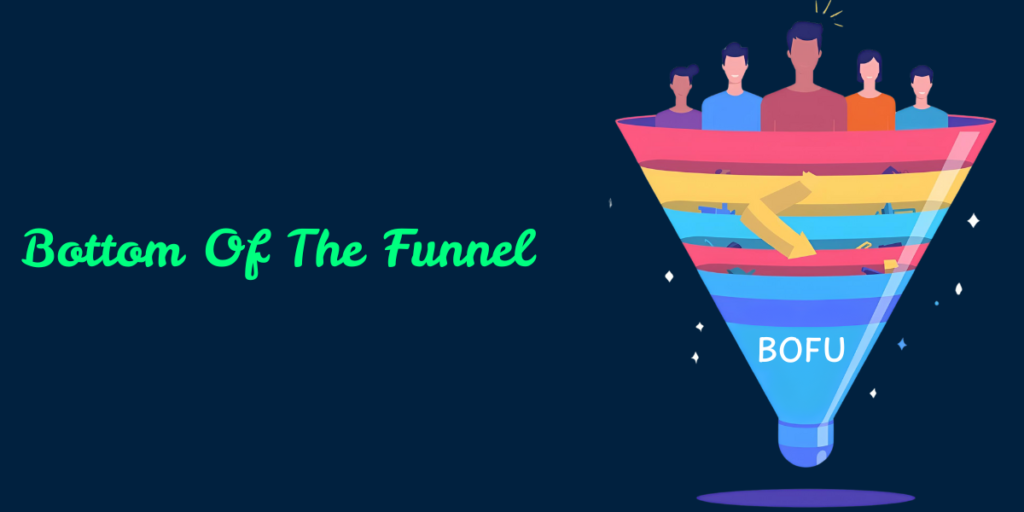
The Bottom of the Funnel (BOFU) is the last step of the funnel where a potential customer is most ready to make a buying decision. At this point, he or she is already past awareness and consideration—he or she knows what he or she wants and is deciding on their solution or provider.
When prospects reach the bottom of the funnel, they’re just about ready to decide whether to buy, subscribe, or register. The messaging gets laser-focused on getting the customer to take this action. Typical actions include free trials, demos, customer testimonials, and limited-time offers.
Specify Clear Goals for Each Stage
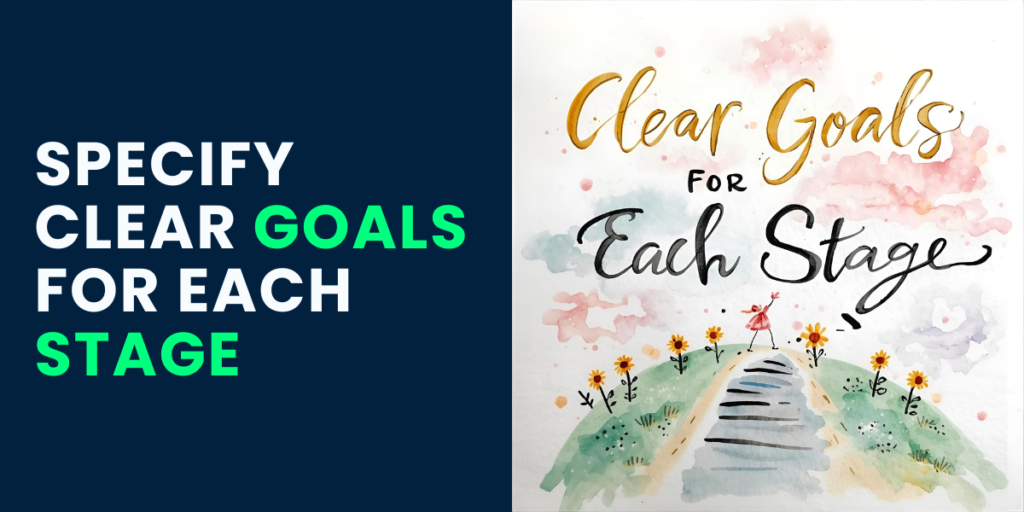
The objective at each level of the marketing funnel is to push the leads step by step to buy your product and become loyal followers. If you have simple and clear goals for each process, you can attract, convert, and retain customers.
Awareness (Top of the Funnel)
In the awareness stage, the primary objective is to attract the attention of a large relevant audience of potential customers and notify those potential customers that your brand exists and what your offering is.
Main Goals:
- Build brand awareness and recognition so that when these potential customers are looking for a solution, they think of your brand first.
- Drive traffic to your website and social media engagement, while also maximizing reach with valuable content that is not overtly selling you.
Consideration (Middle of the Funnel)
Once they are aware of your brand, potential customers are now in the middle of the funnel and are actively researching and evaluating their options. Your number one goal now is to demonstrate your value and build trust so you can distinguish your brand from your competitors.
Main Goals:
- Nurture leads with more targeted and deeper content that addresses their pain points and resolves their questions.
- Demonstrate the value of your product or service and how it is the best choice for their needs.
Conversion (Bottom of the Funnel)
At this point, your prospects are ready to make a buying decision, and you want to help them ensure that they have a very simple, compelling buying experience.
Main Goals:
- Convert qualified leads into paying customers by providing a little push to convert to the final purchase and grow the number of sales conversions.
- Increase sales/revenue and/or increase other conversion actions such as sign-ups to paid service, booking a consultation, etc.
Why use Funnel Strategy in Education Marketing
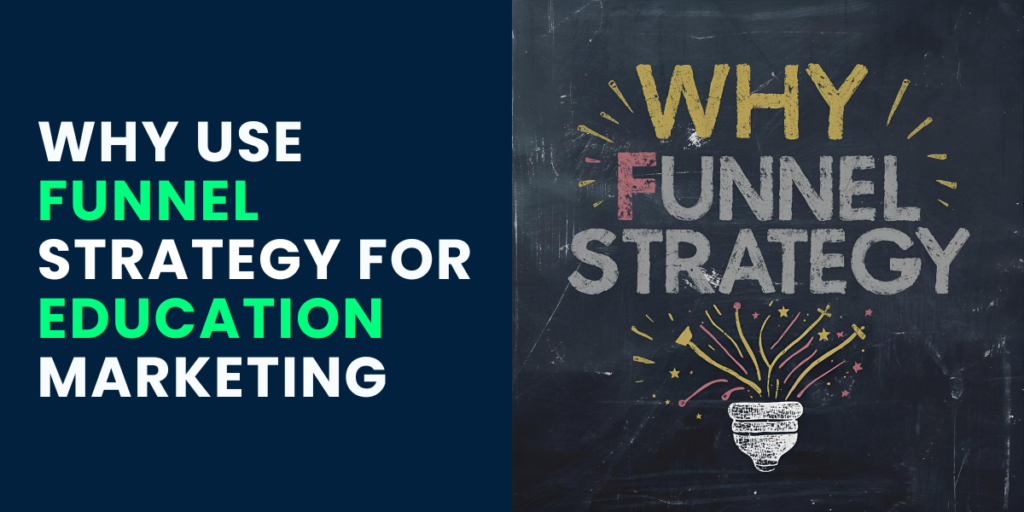
The practice of education marketing is focused on schools, colleges, universities, coaching centers, and edtech platforms. Education marketing aims at attracting and engaging students while building trust with parents. Education marketing embraces creating content with value rather than just promoting. It establishes academic strengths, success stories, and social media presence including search engine optimization and targeted campaigns. Education marketing understands student behavior and parent expectations.
There are many marketing companies but techglide is one of the best companies that provides educational institutions with an intelligent marketing funnel that takes potential customers from awareness to conversion. Initially, it all starts with awareness, created through digital campaign awareness, SEO ranking, and relevant content that attracts highly-targeted audience members.
Once a prospect expresses their interest, they nurture through targeted emails, social media, and educational information that builds trust and keeps the prospect engaged.
At the decision stage, Techglide uses simple calls-to-action, product demonstrations, case studies, and personalized promotions to drive conversions and enrollment.
A successful educational marketing funnel will lead prospective students through the entire journey of the enrollment cycle from the point of their initial interest, to enrollment to a continuing engagement after enrollment. Typically initiated with a larger audience of qualified prospects, the sales funnel flows from a larger perceived pool of prospective students to a smaller pool of prospective students who are most likely to enroll.
The main goal of awareness is to reach the widest audience. This is also the stage where it will involve the widest content-based plugin (blog posts, SEO, social media content, etc.) that demonstrates the value of the institution and what it stands for.
The consideration stage involves engaged prospective students learning about more details behind what the institution offers. The goal of this stage is to engage the prospective student through email sequences, webinars, and case studies that help prospective students gain a better understanding of what you are offering in terms of a unique value proposition.
Finally, converting prospective students to enrolled students will require some level of hyper-targeted outreach in an effort to convert the prospects into students. This outreach will take a personalized touch, which may involve sending detailed financial aid info, guiding the prospective student through the application process, staying in proactive communication to answer any questions, etc.
Test, Measure, and Continuously Improve
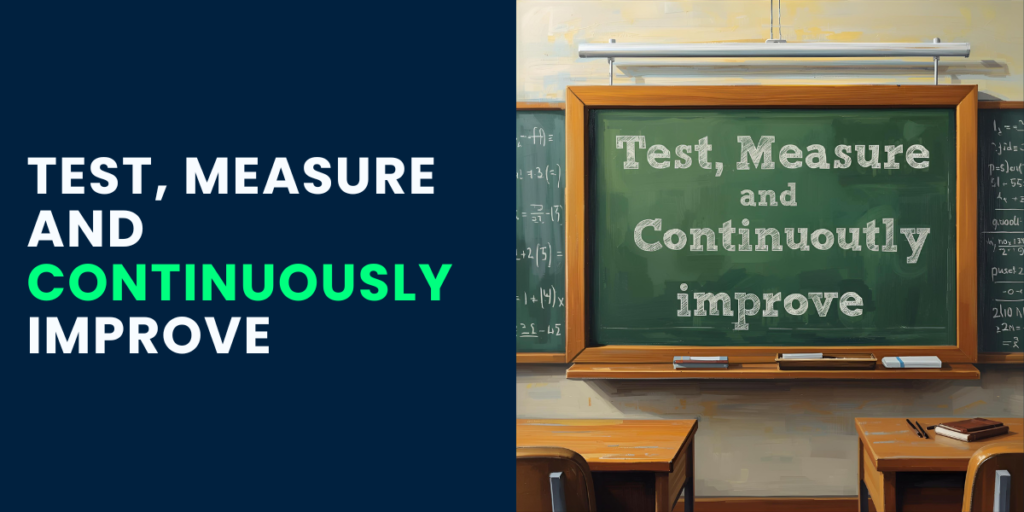
- Test:
When in a sales-ready stage, the testing emphasis shifts from wide marketing communications to the detailed, focused engagements that seek to uncover the prospects’ buying intent and urgency.
- Analyze: Experiment with different facets of your marketing funnel, e.g., tweaking the top (awareness) or the bottom (conversion) and track the variations.
- A/B Testing: Create different versions of landing pages, email subject lines, headlines, calls-to-action (CTAs), and ad creatives to test which one works best.
- User Behavior Analysis: Use heatmaps and session recordings for the complete depiction of user activity on your site, find the areas where the users have problems, and discover the elements that they want to click on but are not clickable.
- Measure:
Track what’s important in relation to the performance (KPI), with respect to the process steps of the marketing funnel.
- Key Metrics: Look into the conversion, click-through rate (CTR), bounce, cost per lead (CPL), customer lifetime value (CLV), and overall return on ad spend (ROAS).
- Analytics Tools: For the most part, Google Analytics data, then, take the User Flow tool to graph the user journey and use funnel analysis to see if there are any segments with a high rate of drop off.
- Continuously Improve:
Use the information you have collected throughout the tests and measurements to inform the right decision and have a better sales funnel.
- Decisions Based on Data: Use proof and not just a gut feeling to sustain the marketing program and keep it optimized.
- Adapt to Trends: You can consistently optimize your funnel to be able to keep pace with the rapidly changing consumer preferences.
Conclusion
When it comes down to making your marketing funnel sales-ready, worry about simplicity, clarity, and a customer-oriented mindset. When you’re aware of who your audience is, have mapped out their journey, developed great content and experiences, and established frictionless processes, you’re going to build trust and make it easier for customers to take action.
You’ll still be able to continue to adapt and innovate each step, and ultimately, your marketing funnel will not only be a journey for prospects to travel, but it’s a way for them to do business (legitimately busy with happy customers). A sales-ready funnel that was designed, organized, and reliable is, like a friend showing you around town, the experience foregoes the abstract and makes the journey simple and enjoyable to you and your audience.

